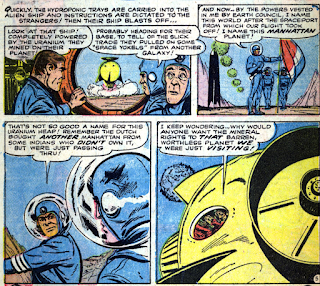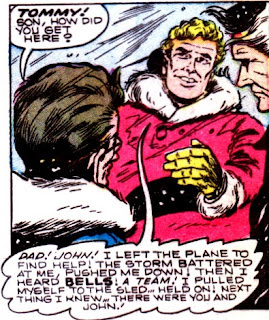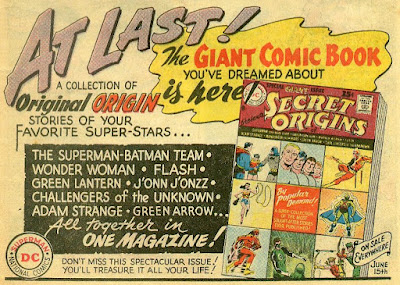"The Legacy" is based on a short story by Gina Kaus called "Sonderbares Liebesdrama" (roughly translated as "Strange Love Drama") that was first published in the German Vogue on November 7, 1928. It was later translated into English and collected in Return to Reality and Other Stories, a 1935 book of short fiction by Kaus, where the title was changed to "The Legacy."
The story is narrated in the first person by someone who is never given a name or a gender, though I think it is a woman. She tells of meeting the Tilgners at a summer hotel; he is young and handsome, while she seems older, more like a mother figure than a wife. He seems to be unfaithful to her and she seems to tolerate it, admitting to the narrator that his behavior is hurtful but insisting that he will always come back to her after an affair. When handsome Conte Albin Rossi arrives at the hotel and begins to pay attention to Frau Tilgner, her husband ignores it. Everyone notices as the Conte's attentions become increasingly more passionate, and Frau Tilgner is agitated by his attention.
 |
| "The Legacy" was first published here |
The narrator suggests to Frau Tilgner that she tell Conte Rossi to prove his sincerity by leaving and not endangering her marriage. When the woman tells the young Conte this, he threatens to commit suicide. That night, he shoots and kills himself. After the funeral, the narrator receives a visit from Rossi's sister, who reveals that he was an unlucky gambler who had ruined himself financially. He planned to commit suicide and staged an affair with Frau Tilgner so that his children would not know the real reason for his death.
The next day, the narrator travels by train to tell Frau Tilgner the truth and relieve her conscience, yet when she arrives at the hotel where the Tilgners are staying, she sees them walking, arm in arm. Herr Tilgner is now paying attention to his wife as never before. The narrator observes that Frau Tilgner has changed and is now "a woman who had been loved;" the experience with Rossi has made her more desirable to her husband. The narrator leaves without telling Frau Tilgner the truth and wonders if Rossi had "intended to make his inevitable death a gift to this good woman," asking, "Could I have offended against his legacy?"
 |
| Jacques Bergerac as Prince Burhan |
Gina Kaus (1893-1985) was born Regina Wiener in Vienna, Austria. Her first novel was published in the 1920s and she was active in literary circles in Vienna and Berlin. She moved to Paris in 1938 and began writing screenplays; in September 1939, she moved to New York, and soon to Hollywood. She began writing screenplays there in 1942 and various TV show episodes and films were also adapted from her works. This was the only Alfred Hitchcock Presents episode in which she was involved.
The screen credit for the TV version of "The Legacy" credits the teleplay to Gina Kaus and Andrew Solt and says that it is based on a story by Kaus, so perhaps Kaus wrote an initial draft of the teleplay and Solt revised it. The TV show is faithful to the short story for the most part, with some notable changes. It begins with voiceover narration by a man who is soon identified as Randy Burnside, "'the famous English author.'" The setting has been moved to Palm Beach, Florida, and a pair of characters named Cecilia Smithson and Colonel Blair have been added. They are aging gossips, and their function is to provide dialogue to replace some of the short story's narration.
 |
| Ralph Clanton as Randy Burnside |
The Tilgners are now Howard and Irene Cole; Howard is a Texas oil man, who flirts openly with a beautiful, blonde film actress named Donna Dew, while Irene is heir to the Ruggles bottle cap empire, said to be wealthier than her husband. Burnside, the narrator, is at the hotel to gather material for a book about Prince Burhan, as Rossi has been renamed; the prince is said to be from India, where he was deposed in riots two years ago (there were riots in Pakistan in 1953, but none in India). Burhan drives race cars and is going to drive at Sebring Raceway, which is a couple of hours from Palm Beach, and which opened in 1950. Burhan is played by French actor Jacques Bergerac, whose accent sounds anything but Indian and who is made up with heavy, bronze makeup that fails to make his Gallic features look like those of an Indian prince.
 |
| Enid Markey as Cecilia Smithson |
Unlike the story, where Rossi's sister arrives at the hotel and tells the narrator the truth, in the TV show, three months pass between Burhan's death and Burnside's discovery. The writer returns to the Palm Beach resort and chats with Henri, who appeared in earlier scenes as a waiter. Henri tells Burnside that Burhan killed himself because he was broke; he lost all his money gambling and was after Irene's fortune. In the TV version, Burhan did not commit suicide after all--Henri explains that the mechanic had disconnected the brakes on his race car, not anticipating that the prince would take it out for a drive at night. In the final scene, Burnside goes to New York City to tell Irene, but chooses not to when he sees the change in her. There is even a suggestion that Irene is now the one to flirt with young men, since she mentions a young actor and asks someone to give him a break.
 |
| Alan Hewitt as Howard Cole |
The episode ends with Burnside explaining, in voiceover narration, that Burhan had given the Coles "'a precious legacy--who was I to rob them of it?'" He then looks at the camera, addresses the viewer, and asks, "'Would you have?'" The final address to the viewer by a character in the story is rare on the Hitchcock TV show.
"The Legacy" is a successful adaptation that adds new characters and uses dialogue in place of the short story's narration. The conte's suicide becomes an accident in the TV show, perhaps to placate the censors, and Burhan's motive is money, not a desire to cover up the real motive for killing himself: since he doesn't commit suicide, and never planned to, it could not be his motive for wooing Irene.
Leora Dana (1923-1983) plays Irene Cole. Her career on stage and screen lasted from the late 1940s to the mid-1980s. She won a Tony Award in 1973, appeared three times on Alfred Hitchcock Presents, including "John Brown's Body," and was in the 1957 film, 3:10 to Yuma.
Prince Burhan is played by the French actor Jacques Bergerac (1927-2014), who was recruited by M-G-M when he was a 25-year-old law student in Paris. He was on screen from 1954 to 1969 and appeared in Gigi (1958) as well as three episodes of Alfred Hitchcock Presents (all written by Andrew Solt) and episodes of Batman. After retiring from acting, he became an executive at Revlon.
Ralph Clanton (1914-2002) plays Randy Burnside; his screen career lasted from 1949 to 1983 and included seven episodes of Alfred Hitchcock Presents (including "Dip in the Pool") and three episodes of Thriller.
"The Legacy" aired on CBS on Sunday, May 27, 1956. Watch it online here. Order the DVD here. Thanks to Al Sjoerdsma for a copy of the short story!
In smaller roles:
- Enid Markey (1894-1981) as Cecilia Smithson; she was on stage and vaudeville before embarking on a film career in 1911. She played Jane in the first film version of Tarzan of the Apes (1918) and stopped making movies in 1920, choosing instead to become a Broadway actress. She returned to the screen in 1945 and continued to act on stage and screen until 1967.
- Alan Hewitt (1915-1986) as Howard Cole; he was on Broadway from 1935 to 1957 and on screen from 1954 to 1978. He was in three episodes of Alfred Hitchcock Presents, including "Invitation to an Accident." He also played Detective Bill Brennan on 28 episodes of My Favorite Martian.
- Walter Kingsford (1881-1958) as Colonel Blair; born Walter Pearce in England, he appeared on the London stage and then on Broadway from 1912 to 1946. His screen career lasted from 1922 to 1958, and he was in five episodes of Alfred Hitchcock Presents, including "John Brown's Body."
- Roxanne Arlen (1931-1989) as Donna Dew; she was born in Detroit and later was crowned "Miss Detroit." Arlen was on screen for about fifteen years from the early 1950s until the late 1960s. There is an entertaining overview of her life and career here.
 |
| Roxanne Arlen as Donna Dew |
- Rudolph Anders (1895-1987) as Henri, the waiter; he was born in Germany, and he emigrated to the U.S. in 1934. He was on screen from 1930 to 1976 and this was his only appearance on the Hitchcock show.
 |
| Rudolph Anders |
* * * * *
Andrew Solt Overview:
Andrew Solt is credited as teleplay writer on three episodes of Alfred Hitchcock Presents. The first was "Safe Conduct," which he wrote as an original teleplay. It is set in Europe and co-stars Jacques Bergerac. The episode is an exciting drama that deals with topical, political themes. The second was "The Legacy," which is set in a U.S. resort. Solt receives co-credit for the teleplay with Gina Kaus, who also wrote the 1928 short story that served as the basis for the TV show. Once again, Jacques Bergerac co-stars, this time as an Indian prince. The only topical, political reference is that he is said to have been deposed in riots two years ago. Finally, Solt is credited with the original story idea for "The Return of the Hero," which stars Jacques Bergerac as an injured war veteran. This episode is set in France and also concerns topical, political issues.
Solt's episodes are unusual in that they do not focus on crime or murder, but rather on relationships between people from various countries, set against the backdrop of political upheaval. It's unusual that Jacques Bergerac appeared in all three episodes, since they were the only episodes of the series in which he was featured. He played a soccer player from the Soviet bloc, a deposed Indian prince, and an injured French soldier. Not surprisingly, he is most believable as the latter.
Sources:
Collection, G. V. (n.d.). German Vogue Collection: Cover, William Bolin II: Limited edition. LUMAS. https://eu.lumas.com/pictures/german_vogue_collection/cover_william_bolin_ii/
Grams, Martin, and Patrik Wikstrom. The Alfred Hitchcock Presents Companion. OTR Pub., 2001.
Hofeneder, Veronika. Der produktive Kosmos de Gina Kaus: Schriftstellerin-Padagogin-Revolutionarin. Hildesheim: Olms, 2013. 36.
Kaus, Gina. "The Legacy." Return to Reality and Other Stories. London: Cassell and Co., 1935. 100-112.
"The Legacy." Alfred Hitchcock Presents, season 1, episode 35, CBS, 27 May 1956.
IBDB, www.ibdb.com.
IMDb, www.imdb.com.
Wikipedia, www.wikipedia.org.















































